Anatomy of PLC 3 major static stabilizers of PLC Lateral collateral ligament Popliteus tendon Popliteofibular ligament Other static stabilizers of PLC Lateral capsule thickening Arcuate ligament Fabellofibular ligament Dynamic stabilizers of PLC Biceps femoris Popliteus muscle Iliotibial band (ITB) Lateral head of gastrocnemius There are 2 “Y” shaped structures in…
Tag: Anatomy
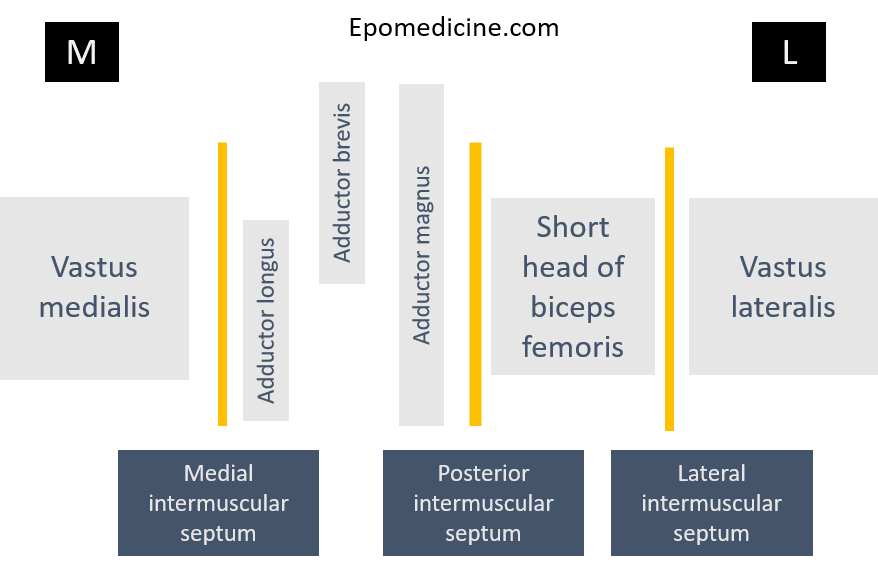
Linea Aspera
Linea aspera is a ridge of roughened surface on the posterior surface of the shaft of femur which serves as a site for attachment of muscles and intermuscular septum. The various structures attached to linea aspera can be remembered using few mnemonics: Mnemonic 1#: 1, 2, 3 It gives attachment…
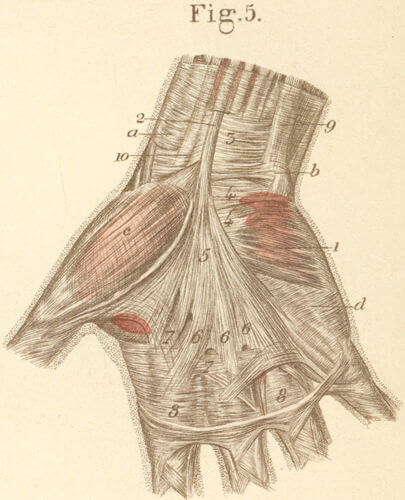
Palmar Aponeurosis or Fascia
5 components a. Central aponeurosis It is triangular in shape with apex originating at the level of flexor retinaculum as a continuation of palmaris longus and thins and fans out distally. It has 3 dimensional fiber orientation: longitudinal, transverse and vertical 1. Longitudinal: Gives 4 pre-tendinous band (PTB) in the…
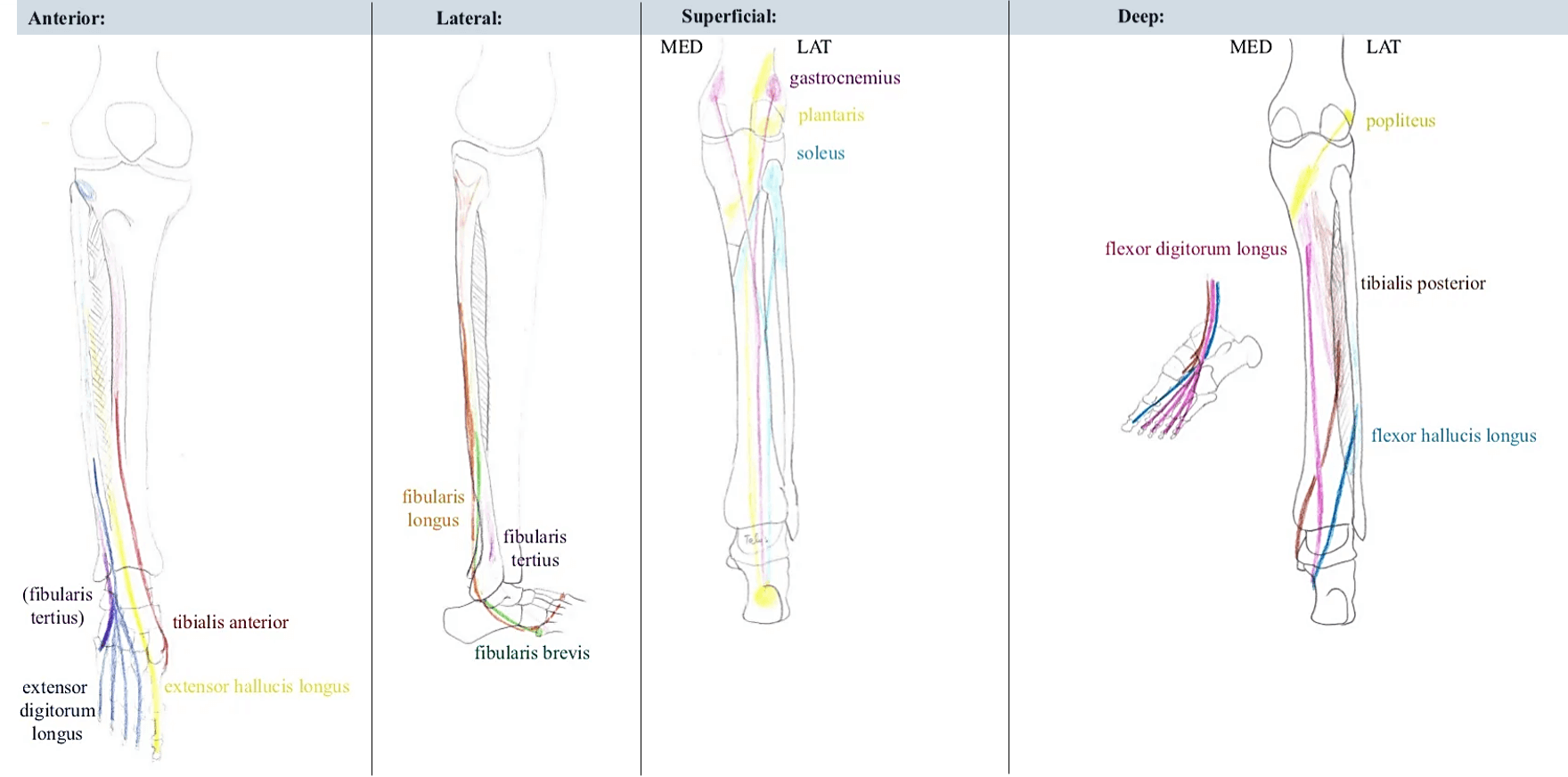
Compartments, Muscles and Fasciotomy of the leg
Muscle Origin Insertion Action Innervation Anterior compartment 1. Tibialis anterior (TA) Superior 2/3 lateral surface of tibia Medial cuneiform, 1st metatarsal Dorsiflexion, foot inversion Deep peroneal nerve (L5) 2. Extensor digitorum longus (EDL) Superior 2/3 of fibula and interosseous membrane Middle and distal phalanx, lateral 4 toes Dorsiflexion, toe extension…

Spaces and Compartments of Hand
Spaces of Hand Deep space infections occur in one of the three anatomically defined potential spaces within the hand. Thenar, mid-palmar and hypothenar spaces Interdigital subfascial web space Forearm space of parona Deep hand space Dorsal border Volar border Ulnar border Radial border Remarks Thenar Adductor pollicis Palmar aponeurosis Middle…
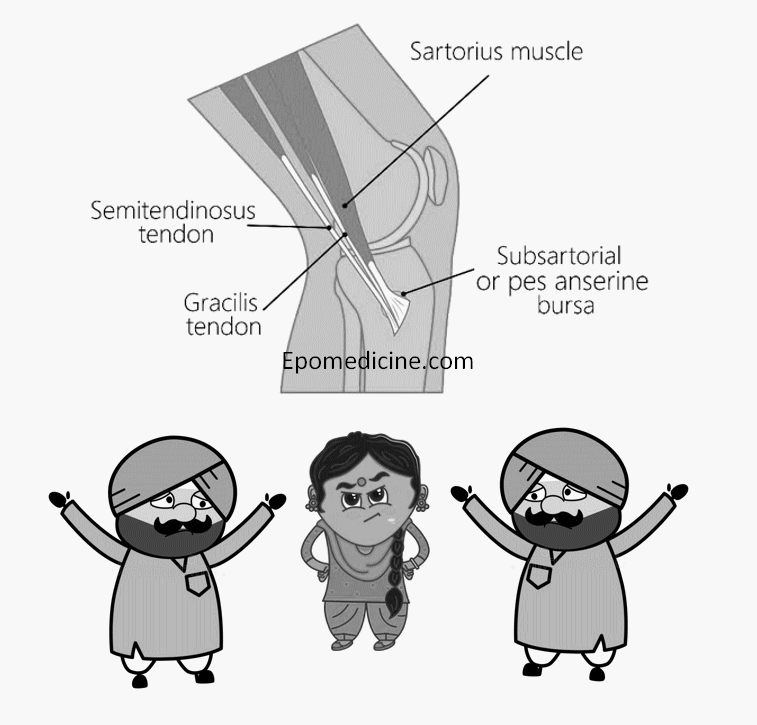
Pes Anserinus : Mnemonic
Pes Anserinus is composed of the combination of tendinous insertions of the sartorius, gracilis and semitendinosus muscles (guy ropes muscles) which attaches to the medial side of tibia to generate a “goose’s foot” like appearance. These three muscles are mainly flexors of the knee but also have a role in…
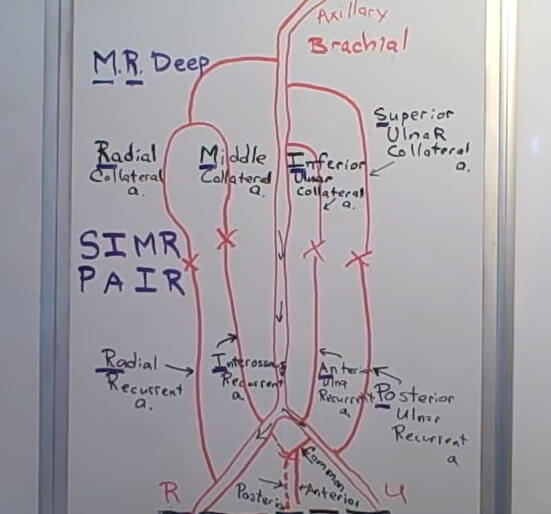
Elbow Anastomoses : Mnemonic
First things first. It is essential to understand the meaning of collateral and recurrent arteries. Recurrent arteries turn back so as to reverse direction. Collateral arteries refer to side branches of the major arteries. Mnemonic: M.R. Deep On the posterior aspect of the shaft of the humerus: Profunda brachii (Deep…
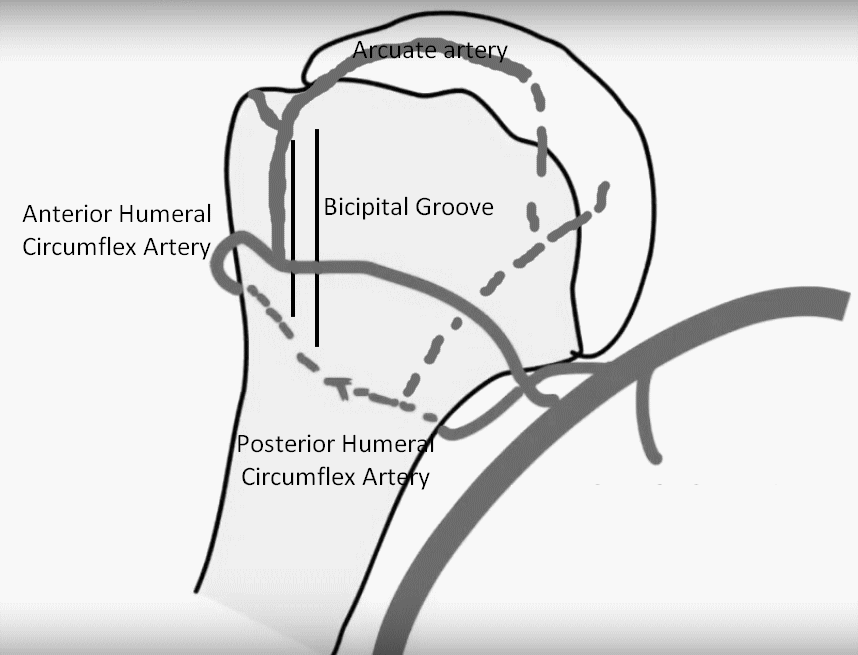
Blood Supply of Humeral Head
Anterior Humeral Circumflex Artery (AHCA) Origin: Axillary artery Course: Along the inferior border of subscapularis Gives anterolateral ascending branch which courses along lateral aspect of bicipital groove entering the humeral head and becoming arcuate artery Continues posterolaterally to anastomose with Posterior Humeral Circumflex Artery (PHCA) Posterior Humeral Circumflex Artery (PHCA)…
